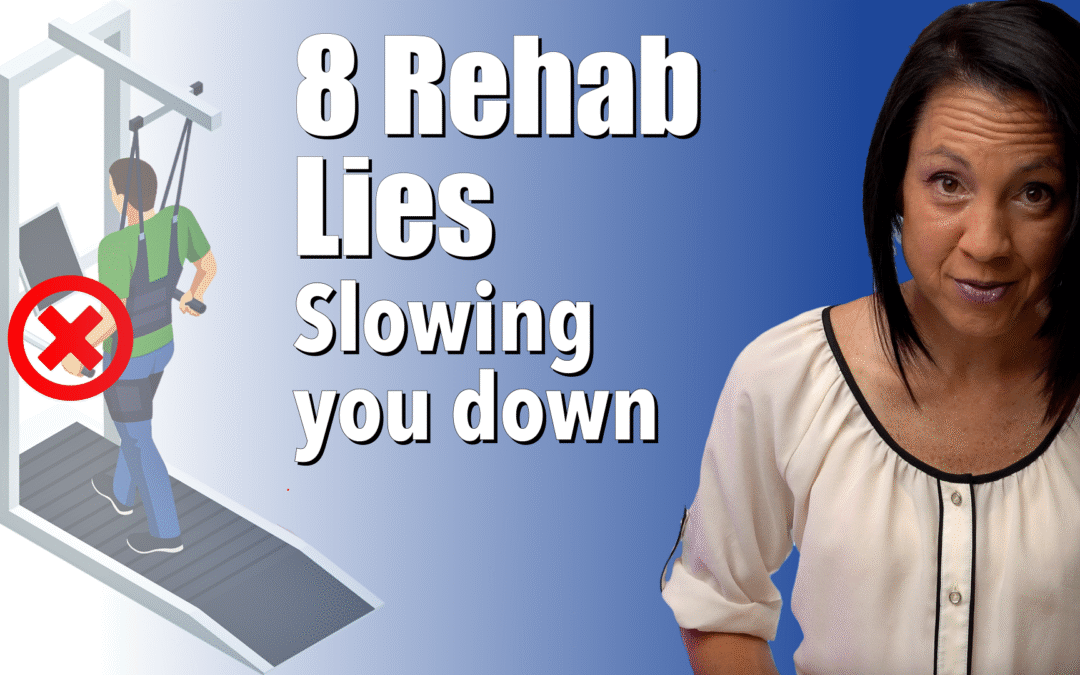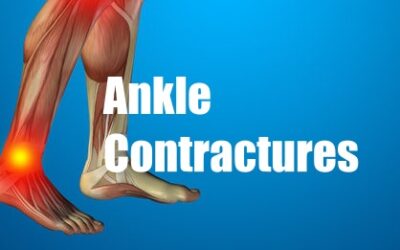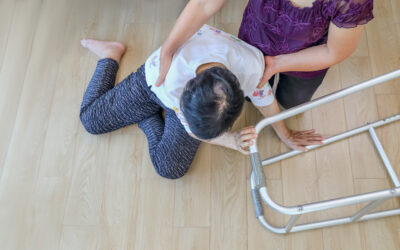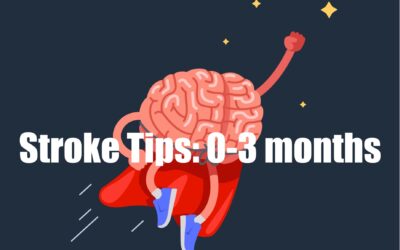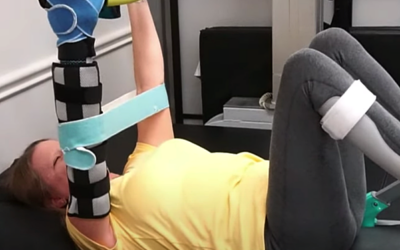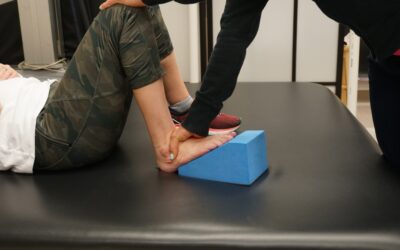8 Neuro Rehab Myths That Are Holding You Back (And What to Do Instead)
Debunking Common Myths About Neurologic Recovery
If you’ve ever been told that your recovery after a neurologic injury has an expiration date, or if your physical therapy has focused only on walking speed, this post is for you. Outdated beliefs in the healthcare system can hold people back from true recovery. We’re breaking down the most common myths and revealing the truth that can help you take ownership of your rehab journey.
Myth 1: Recovery Stops After 18 Months
Many patients are told there’s a point after which no new progress is possible. This is false.
The Truth: Your brain can rewire itself throughout your entire life. Neuroplasticity doesn’t stop after six months, a year, or even 18 months. Many patients make progress years after their injury, gaining new movement and independence. Supportive caregivers, repetition, and a growth mindset make this recovery possible.
Myth 2: Walking Speed is the Ultimate Goal
Many traditional therapists focus heavily on gait speed, often citing 1.4 meters per second as a benchmark.
The Truth: While walking speed has value (it relates to community mobility and fall risk), it’s not the most important measure of recovery. Overemphasis on speed can create harmful compensatory patterns, making it harder to restore movement on the affected side. The real goal should be quality of movement, not just speed.
Myth 3: “No Pain, No Gain” or “Pain means stop”
Pain advice is confusing. Some say push through it, others say avoid it entirely.
The Truth: Both extremes are misleading. Mild, tolerable discomfort is necessary to retrain your nervous system, but pushing through too much pain can increase spasticity and fear. On the other hand, avoiding all pain can stall progress. The key is finding your personal pain threshold where you can work without triggering negative emotional reactions.
Myth 4: Expensive Equipment is Required for Recovery
Robotic devices, subscriptions, and high-tech therapy tools are often marketed as essential.
The Truth: Most progress comes from intentional & repetitive practice, not gadgets. Many expensive tools end up unused in closets. In most cases, a skilled therapist and simple tools are far more valuable.
Myth 5: Assistive Devices and Braces Are Crutches
Canes, AFOs, and braces are sometimes stigmatized as signs of dependency.
The Truth: Devices like AFOs or canes are not signs of weakness. They are actually tools that support recovery, reduce spasticity, promote safer walking, and improve quality of life. The real risk comes from abandoning them too early, which can worsen gait deviations.
Tip: Avoid long-term reliance on HEMI walkers.
Myth 6: If You Can’t Do It Perfectly, Don’t Do It At All
Some therapists push for perfect movement, while others focus solely on speed.
The Truth: Waiting for perfection is counterproductive. Safe, consistent practice, imperfect or not, builds confidence, strength, and neuroplasticity. Even small mistakes help the brain learn and self-correct. Avoiding activity altogether increases sedentary time, which raises the risk of secondary health problems.
Myth 7: Recovery Only Happens in Therapy Sessions
Therapy sessions are valuable, but they are not enough on their own.
The Truth: Progress isn’t limited to the clinic. True neuroplastic change requires consistent repetition outside of therapy as well. The real breakthroughs often happen at home with daily, intentional practice. Therapists can guide you, but ownership of recovery happens in your everyday routines.
Myth 8: Recovery Means Returning to How You Were Before
Many people expect steady progress, but recovery often comes in fits and starts.
The Truth: Recovery is not always about going back to your “old normal.” It’s about creating a new normal where you can regain independence, adapt, and thrive. Even if some functions don’t return exactly as they were, you can still build meaningful strength, movement, and confidence to live fully.
Final Thoughts
Neurologic recovery is not limited by time, gadgets, or perfection. By letting go of outdated myths, you can embrace a balanced, realistic approach that supports lifelong progress. Remember: your brain is always capable of change, and with the right mindset, tools, and support, you can move forward in your recovery journey.
Articles you may be interested in
Ankle Contractures: Best and worst treatments
One of many problems when the neurologic system is damaged are ankle contractures. A contracture is where the soft tissue structures surrounding a joint shorten causing loss of movement. What Causes a Contracture? There are several factors that can lead to an ankle...
Fix your fear of falling
Balance (also known as postural stability) is dramatically impacted when there is damage to the neurologic system and can increase the fear of falling. It is the one ability most of us (adult humans) take for granted……..until it is gone. Lack of postural stability...
Stroke: Critical Tips (0-3 months)
Stroke survivors often suffer from a myriad of complications after their stroke. In an effort to help you get the most out of your rehab (and reach your maximum potential) there are some critical tips and/or “foundational” points of emphasis. Things you didn't...
Parkinson’s Disease: Managing Depression
Depression is common problem associated with Parkinson's disease (PD) and can affect all aspects of your life. In fact, it is estimated that approx. 40-50% of those diagnosed with PD experience depression. Depression is a serious mental illness that causes severe...
Multiple Sclerosis: How much exercise is enough?
It seems almost every other week there is some new study on the benefits of exercise and how it can help prevent conditions like diabetes, heart disease, and depression. But what about multiple sclerosis? The national MS society reports that 1 million people are...
Equipment for Stroke Arm Exercises
Products For a Spastic Arm Having the right tools for stroke arm rehabilitation is critical. Especially for those who have spasticity. Spasticity is an involuntary muscle contraction caused by damage to the brain and/or spinal cord. In the arm it can cause...
Foam Wedges: For positioning and more
Positioning/Stretching Foam Wedge This wedge is made of dense foam with a rubber base to keep it from sliding. Uses: It can be used to position the pelvis. It can be placed under the thigh in sitting to stop the leg from rotating outward. It can be used for bridging...
Clonus: Causes and Treatment
Clonus is an involuntary, rhythmic muscle contraction followed by a relaxation. It is a sign that there is damage to the brain and/or the spinal cord (upper motor neuron). More specifically, the part of the nervous system that controls movement (descending motor...
Rolling with the punches after a Stroke
Why do some people seem to “thrive” in the midst of life’s challenges? You know the type. Or maybe you don’t. To understand what I mean, you need to be a “people analyzer”. You see, I AM a “people analyzer”. I love to know what makes people tick. Especially when it...
Abnormal Muscle Synergies after a Stroke or Brain Injury
Abnormal muscle synergies are one of the most common "movement problems" after a stroke or brain injury. What is an abnormal muscle synergy? A flexor synergy is when the hip, knee, and ankle all flex at the same time (visualize drawing your knee into your chest). An...

